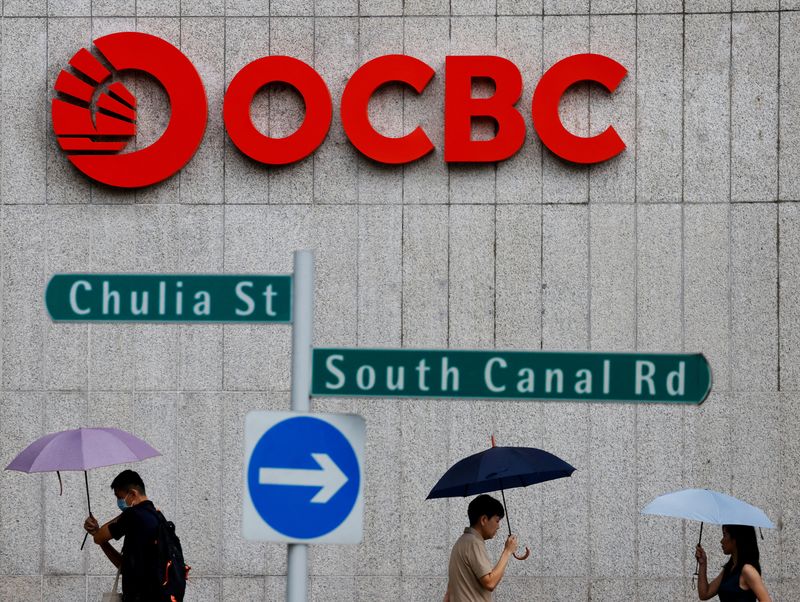By Yantoultra Ngui and Vineet Sachdev
SINGAPORE (Reuters) – Singaporean banks’ mainstay wealth businesses are set to drive growth in the near-term on interest rate cuts and hopes of a revival in the Chinese economy, even as they are expected to post a sequential decline in earnings in the third quarter.
DBS and Oversea-Chinese Banking Corp, Singapore’s top two lenders, are set to report falls of 3% and 7.4% in third quarter profits, respectively, from the preceding quarter, LSEG estimates show, on subdued loan growth.
DBS kicks off the bank reporting season on Nov. 7, followed by OCBC, due on Nov. 8.
Singaporean banks, Southeast Asia’s largest by assets, have been reaping the benefits of a booming wealth business that drove assets and fee income to records in recent quarters, while higher interest rates kept a lid on loan growth.
Demand for loans is expected to improve following the U.S. central bank’s interest rate cut in September and broader-than-expected monetary stimulus and property support measures in China, a key market for Singaporean banks.
“With the 50 basis points cut and more cuts projected, this should be positive for loans growth as borrowing costs become less prohibitive,” said Neo Teng Hwee, CIO for private banking arm of United Overseas Bank (OTC:UOVEY), Singapore’s No. 3 lender.
“Some leveraged investments may pick up too, as overall capital markets look resilient given the likelihood of a soft landing and declining inflation.”
Vivienne Chia, global head of investment solutions group at Bank of Singapore – the private banking arm of OCBC, said she expected demand for credit facilities to pick up as the interest rate cycle develops.
“We anticipate a double digit increase in Bank of Singapore’s loan book in 2025 due to the favorable impact of lower interest rates,” she said. Bank of Singapore said it was not able to provide past figures.
Singaporean banks have been expanding wealth businesses to tap the rising number of dollar millionaires in Asia, mainly in China, with the rich increasingly looking to park their assets in offshore markets.
Asia is projected to contribute nearly 30% of new financial wealth globally by 2028, from 17% last year, driven by wealth creation in China and India, according to Boston Consulting Group’s Global Wealth Report 2024.
China’s recent stimulus measures to revive the world’s second-largest economy are positive for the Singaporean banks’ wealth business, private bankers and analysts said.
“It creates investment opportunities for many of our clients who have a lot of dry powder on the sideline looking for ideas,” said Rickie Chan, Bank of Singapore’s private banking head for Greater China and Hong Kong chief executive.
“It also improves sentiment, the wealth effect to a certain extent, of our clients across Greater China, which will likely lead to more clients and prospects wanting to hear our investment advice.”
While declining rates on bank term deposits will spur rich clients to turn to high-yield wealth management products, the impact of rate cuts and China stimulus will take time to play out and be reflected in banks earnings, Maybank Investment Banking Group’s regional head of financials, Thilan Wickramasinghe, said.
DBS Private Bank’s group head Joseph Poon said the bank has not seen and does not expect a jump in client borrowings in the near term given the 0.5% rate cut has yet to be fully digested and the timing of further cuts is undecided.
However, the impact on sentiment from lower rates helps sustain the broad-based bullishness in asset prices and would lead more wealth clients to deploy their cash into investments, Poon said.
“This will enable us to be on track to double our wealth fees, which already topped S$2 billion last year, by 2027”.

